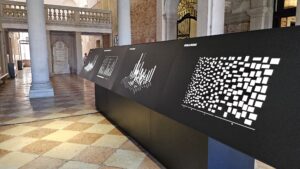Nella ricerca dell’innovazione, uno dei settori dai quali quello delle costruzioni si è lasciato contaminare più volentieri è stato quello dell’industria automobilistica, nonostante le evidenti differenze. Parlare di Lean nel settore delle costruzioni è ormai d’obbligo e il concetto di Lean Construction è più che codificato.
Per andare al di là del sentito dire, approfondire le radici di quella che chiamiamo produzione snella da un punto di vista storico e sociale, oltre che economico, ed esplorare le radici di uno dei sistemi alla base di molti ragionamenti relativi all’innovazione del prodotto e alla riduzione degli sprechi, questo lunedì il mio consiglio è The Machine That Changed the World, che spesso mi è capitato di citare a lezione.

James P. Womack, Daniel T. Jones, Daniel Roos,
The Machine That Changed the World: The Story of Lean Production—
Toyota’s Secret Weapon in the Global Car Wars That Is Now Revolutionizing World Industry
Free Press
When The Machine That Changed the World was first published in 1990, Toyota was half the size of General Motors.
Twenty years later Toyota passed GM as the world’s largest auto maker.
This management classic was the first book to reveal Toyota’s lean production system that is the basis for its enduring success.
Sulla relazione tra Lean e BIM, on-line si trovano numerosi articoli, principalmente orientati a cercare di vendervi qualcosa. I contributi essenziali rimangono Interaction of Lean and Building Information Modelling di Rafael Sacks (recuperabile ad esempio qui) e il precedente Analysis framework for the interaction between lean construction and Building Information Modelling, sempre di Sacks (sempre qui). Secondo Sacks, il BIM è espressione di produzione snella sotto tre punti di vista:
- la possibilità, da parte di diversi attori nel processo di progettazione, di modificare diverse alternative progettuali utilizzando diversi strumenti software tra loro interoperabili, senza oneri di riprogettazione (Sacks è lo stesso che ha portato avanti numerosi testi sull’IFC dimostrandone le limitazioni, quindi parla con cognizione di causa);
- la possibilità da parte di diverse discipline di lavorare in parallelo centralizzando il coordinamento attraverso il modello e distribuendo quindi meglio gli oneri e il carico di lavoro;
- la possibilità di simulare i lavori del processo di costruzione vero e proprio per intercettare in anticipo possibili opportunità di ridurre gli sprechi.
Per ulteriori spunti di approfondimento, consiglio anche:
- Technology adoption in the BIM implementation for lean architectural practice di Yusuf Arayici (qui);
- Building Information Modeling and Lean Construction: Technology, Methodology and Advances from Practice di David Jason Gerber e consorte (qui);
- BIM and lean interactions from the BIM capability maturity model perspective: A case study, di Fernanda Leite (qui);
- Challenges and benefits of implementing virtual design and construction technologies for coordination of mechanical, electrical, and plumbing systems on large healthcare project di Martin Fischer (qui).
Nel 2017, Sacks ha pubblicato un libro specifico sull’argomento: Building Lean, Building BIM: Improving Construction the Tidhar Way.
Se siete interessati a contribuire all’argomento, date un’occhiata a questo call for paper, in chiusura il 20 Novembre.







No Comments